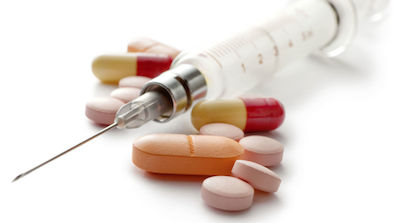 From the Editor…
From the Editor…
The following information has been retrieved from the US Food & Drug Administration.
Drug interactions may make your drug less effective, cause unexpected side effects, or increase the action of a particular drug. Some drug interactions can even be harmful to you. Reading the label every time you use a nonprescription or prescription drug and taking the time to learn about drug interactions may be critical to your health. You can reduce the risk of potentially harmful drug interactions and side effects with a little bit of knowledge and common sense. Drug interactions fall into three broad categories:
❏ Drug-drug interactions occur when two or more drugs react with each other. This drug-drug interaction may cause you to experience an unexpected side effect. For example, mixing a drug you take to help you sleep (a sedative) and a drug you take for allergies (an antihistamine) can slow your reactions and make driving a car or operating machinery dangerous.
❏ Drug-food/beverage interactions result from drugs reacting with foods or beverages. For example, mixing alcohol with some drugs may cause you to feel tired or slow your reactions.
❏ Drug-condition interactions may occur when an existing medical condition makes certain drugs potentially harmful. For example, if you have high blood pressure you could experience an unwanted reaction if you take a nasal decongestant.
Drug Interactions and Over-the-Counter Medicines
Over-the-counter (OTC) drug labels contain information about ingredients, uses, warnings and directions that is important to read and understand. The label also includes important information about possible drug interactions. Further, drug labels may change as new information becomes known. That’s why it’s especially important to read the label every time you use a drug.
The “Active Ingredients” and “Purpose” sections list:
❏ the name and amount of each active ingredient
❏ the purpose of each active ingredient
The “Uses” section of the label:
❏ tells you what the drug is used for
❏ helps you find the best drug for your specific symptoms
The “Warnings” section of the label provides important drug interaction and precaution information such as
❏ when to talk to a doctor or pharmacist before use
❏ the medical conditions that may make the drug less effective or not safe
❏ under what circumstances the drug should not be used
❏ when to stop taking the drug
The “Directions” section of the label tells you:
❏ the length of time and the amount of the product that you may safely use
❏ any special instructions on how to use the product
The “Other Information” section of the label tells you:
❏ required information about certain ingredients, such as sodium content, for people with dietary restrictions or allergies
The “Inactive Ingredients” section of the label tells you:
❏ the name of each inactive ingredient (such as colorings, binders, etc.)
The “Questions?” or “Questions or Comments?” section of the label (if included):
❏ provides telephone numbers of a source to answer questions about the product
Learning More About Drug Interactions
❏ Talk to your doctor or pharmacist about the drugs you take. When your doctor prescribes a new drug, discuss all OTC and prescription drugs, dietary supplements, vitamins, botanicals, minerals and herbals you take, as well as the foods you eat. Ask your pharmacist for the package insert for each prescription drug you take. The package insert provides more information about potential drug interactions.
❏ Before taking a drug, ask your doctor or pharmacist the following questions:
✔︎ Can I take it with other drugs?
✔︎ Should I avoid certain foods, beverages or other products?
✔︎ What are possible drug interaction signs I should know about?
✔︎ How will the drug work in my body?
✔︎ Is there more information available about the drug or my condition (on the Internet or in health and medical literature)?
❏ Know how to take drugs safely and responsibly. Remember, the drug label will tell you:
✔︎ what the drug is used for
✔︎ how to take the drug
✔︎ how to reduce the risk of drug interactions and unwanted side effects
❏ If you still have questions after reading the drug product label, ask your doctor or pharmacist for more information
❏ Remember that different OTC drugs may contain the same active ingredient. If you are taking more than one OTC drug, pay attention to the active ingredients used in the products to avoid taking too much of a particular ingredient. Under certain circumstances – such as if you are pregnant or breast-feeding – you should talk to your doctor before you take any medicine. Also, make sure you know what ingredients are contained in the medicines you take. Doing so will help you to avoid possible allergic reactions.

